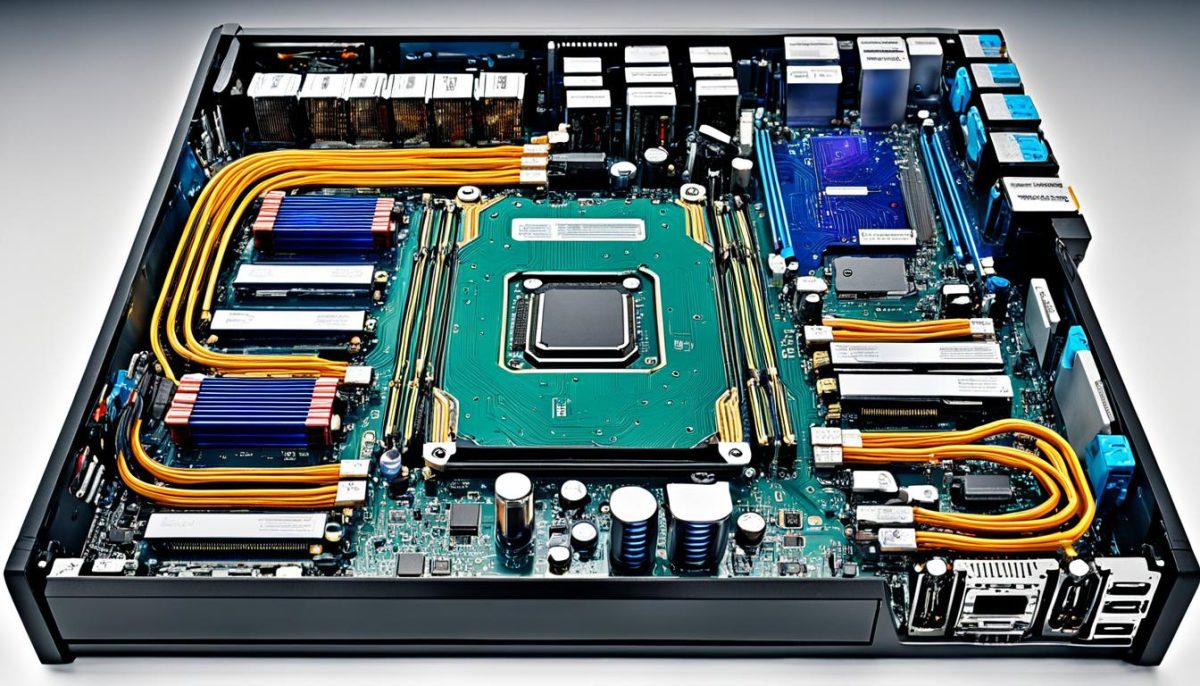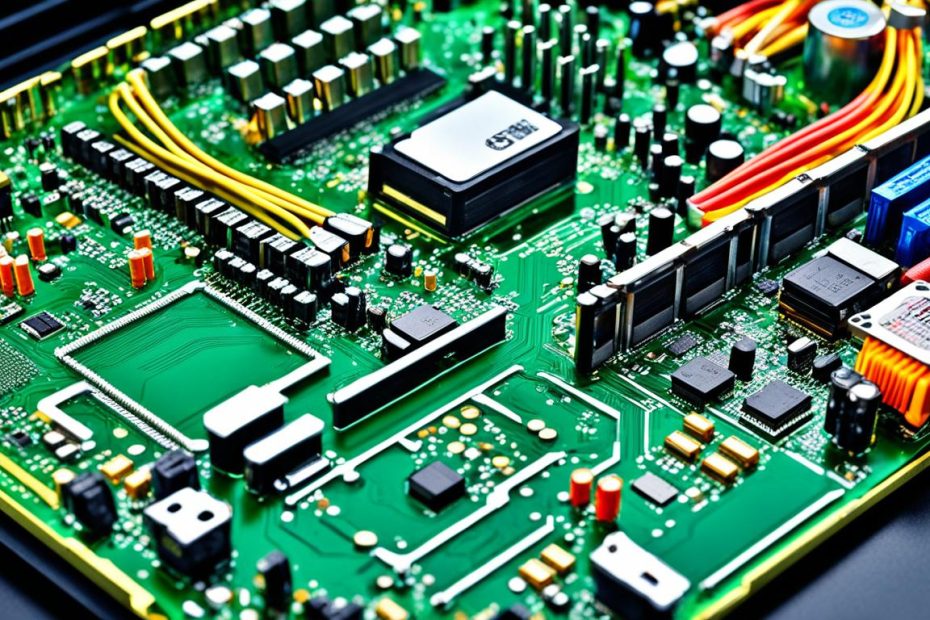Welcome to our comprehensive guide on computer hardware, where we delve into the essential components that make up a computer and their significance in building a functional PC. Whether you’re a tech enthusiast or a novice looking to understand the inner workings of your computer, this article will provide you with valuable insights and knowledge.
Computer hardware refers to the physical components that make up a computer system. These components work together to ensure proper functioning and performance. Understanding computer hardware is essential for anyone looking to upgrade their system, troubleshoot issues, or build a new computer from scratch.
In the upcoming sections, we will explore various aspects of computer hardware, including the key components that play vital roles in the system. We’ll discover the importance of the central processing unit (CPU), motherboard, memory, storage devices, and graphics card in ensuring optimal performance.
Furthermore, we’ll delve into the latest advancements in computer hardware technologies, such as solid-state drives (SSD), random access memory (RAM), USB ports, HDMI interfaces, and Wi-Fi connectivity. These technologies significantly enhance the speed, efficiency, and capabilities of a computer.
Lastly, we’ll offer valuable tips and considerations to help you choose the right computer hardware based on your needs, such as hardware compatibility, budget constraints, and performance requirements. Making informed decisions in selecting the appropriate components can make a significant difference in maximizing your computer’s capabilities.
So, let’s embark on this journey to explore the fascinating world of computer hardware and gain a deeper understanding of the PC components that power our digital lives.
The Key Components of Computer Hardware
When it comes to understanding how a computer works, it’s essential to familiarize yourself with the key components that make up its hardware. These components work together harmoniously to ensure optimal performance and functionality. In this section, we will delve deeper into the central processing unit (CPU), motherboard, memory, storage devices, and graphics card – the foundational elements of computer hardware.
The Central Processing Unit (CPU)
The central processing unit, or CPU, is often regarded as the “brain” of the computer. It carries out instructions, performs calculations, and manages the flow of data within the system. The CPU’s speed and number of cores directly impact the computer’s processing power, influencing overall performance and multitasking capabilities.
The Motherboard
The motherboard serves as a hub that connects all the components of a computer hardware system. It provides the necessary communication channels between the CPU, memory, storage, and other peripherals. Considered the “backbone” of the computer, the motherboard ensures seamless integration and efficient data transfer between the different hardware components.
Memory
Memory plays a vital role in computer operations. Random access memory (RAM) temporarily stores data that the CPU requires for immediate processing. RAM size and speed impact the system’s multitasking capabilities and responsiveness. On the other hand, read-only memory (ROM) stores firmware, including the computer’s boot instructions.
Storage
Storage devices are responsible for holding vast amounts of data on a computer. Hard disk drives (HDDs) offer large storage capacities at an affordable price, while solid-state drives (SSDs) provide faster data access speeds and improved system responsiveness. The choice between HDD and SSD depends on the user’s needs and budget.
Graphics Card
A graphics card, also known as a video card or GPU, handles the processing and rendering of visual information. It is particularly essential for gaming, graphic design, video editing, and other multimedia-intensive tasks. A powerful graphics card enhances the computer’s ability to handle complex graphics and provide a smooth visual experience.
Understanding the core components of computer hardware is crucial for anyone looking to build, upgrade, or troubleshoot a computer. In the next section, we will explore the latest advancements in computer hardware technologies, including solid-state drives, random access memory, USB ports, HDMI interfaces, and Wi-Fi connectivity.
Understanding Computer Hardware Technologies
Stay up to date with the latest advancements in computer hardware technologies. In this section, we will delve into cutting-edge technologies that are shaping the future of computing. From high-speed storage solutions to seamless connectivity options, these innovations are revolutionizing the way we use and interact with our computers.
Enhanced Performance with Solid-State Drives (SSD)
Experience lightning-fast speed and improved efficiency with solid-state drives (SSD). Unlike traditional hard disk drives (HDD), SSDs use flash memory to store data, resulting in significantly faster boot times, reduced file transfer durations, and overall snappier performance. With no moving parts, SSDs also offer enhanced durability and reliability, making them perfect for both desktop and laptop computers.
Unleashing the Power of Random Access Memory (RAM)
Random Access Memory (RAM) plays a crucial role in multitasking and system responsiveness. By temporarily storing data that is actively used by the computer, RAM allows for fast and efficient access, resulting in smoother and more seamless user experiences. High-capacity RAM modules enable quicker program loading times, smoother gameplay, and improved overall system performance.
Versatility and Connectivity with USB Ports
USB (Universal Serial Bus) ports have become the standard for connecting various peripheral devices to computers. From keyboards and mice to external hard drives and printers, USB ports offer unmatched versatility and convenience. With the latest USB 3.0 and USB Type-C standards, data transfer speeds have reached new heights, ensuring rapid file sharing and seamless device connections.
High-Definition Multimedia Interface (HDMI)
“HDMI technology has revolutionized the way we connect our computers to displays and audio devices. With support for high-definition video and audio signals, HDMI allows for pristine image quality and immersive audio experiences. Whether you’re gaming, watching movies, or giving presentations, HDMI ensures a seamless and hassle-free connection.”
Seamless Wireless Connectivity with Wi-Fi
Experience the freedom of wireless connectivity with Wi-Fi. With Wi-Fi-enabled computers, you can enjoy high-speed internet access without the need for messy cables or physical connections. Whether you’re at home, in the office, or on the go, Wi-Fi allows you to stay connected and productive.

Choosing the Right Computer Hardware for Your Needs
When it comes to building or upgrading a computer, selecting the right hardware is essential. There are several factors you need to consider to ensure that the hardware you choose is compatible with your system, fits within your budget, and meets your performance requirements.
Firstly, hardware compatibility is crucial. Make sure to check whether the components you are considering are compatible with your existing system or the motherboard you plan to use. This includes checking the socket type for the CPU, the RAM specifications, and the connectors for storage devices and peripherals.
Secondly, consider your budget. Determine how much you are willing to spend on your computer hardware. Look for components that provide the best value for your money, balancing performance and cost. Keep an eye out for promotions or discounts that can help you stretch your budget further.
Lastly, assess your performance requirements. Think about the tasks you will be using your computer for. If you primarily use your computer for basic tasks like web browsing and office work, you may not need high-end components. However, if you are a gamer or a video editor, you will need more powerful hardware to handle demanding applications.
